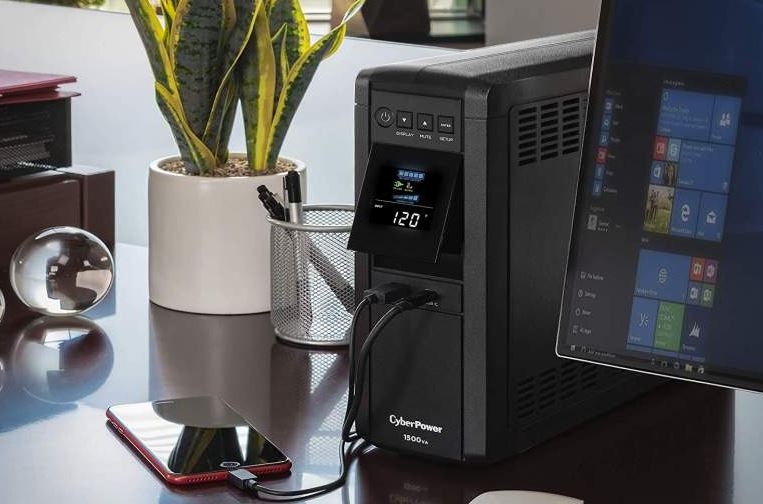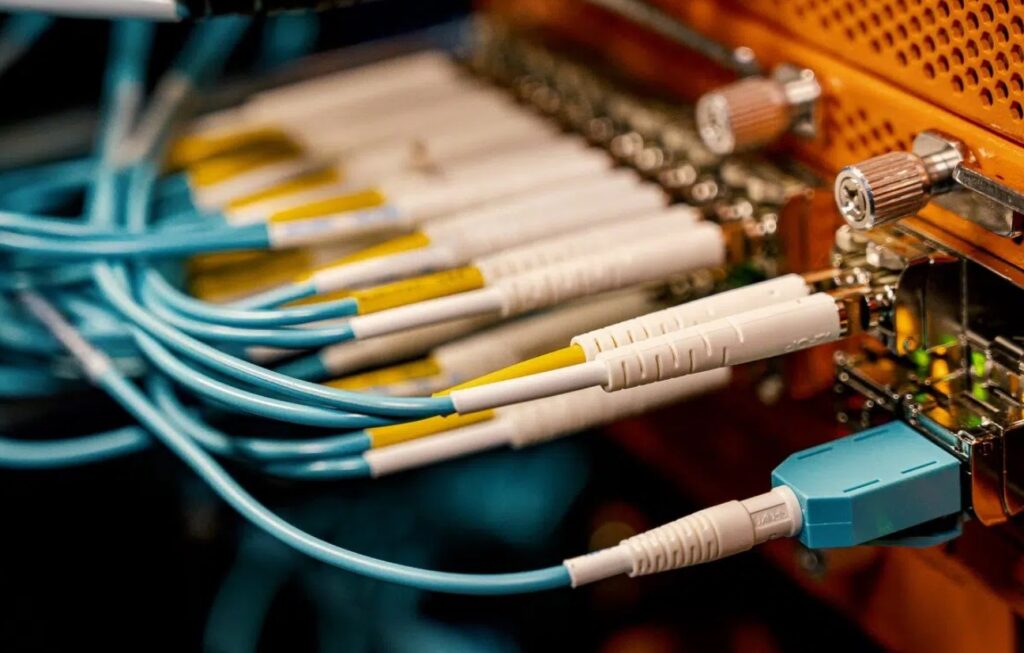An augmented battery system called an uninterruptible power supply (UPS) is designed to automatically activate in the case of a power outage and serve as the main power source until all electronic devices can be safely turned off or an emergency generator takes over.

A UPS’s main function is to maintain steady power levels and stop spikes that could damage digital or mechanical devices. There are several design styles for different levels of protection, but all UPS systems are made to maintain steady power levels and prevent fluctuations that could damage digital or mechanical equipment. The protected equipment size—which can range from a single computer to a sizable data center, building complex, or city—determines the size and capabilities of a UPS system.
Basic Function of UPS
- Prevents voltage spikes and overcurrent from harming the hardware. The input power is also continually regulated in several UPS types.
- Keeps data safe and undamaged. Data saved on devices vulnerable to unexpected shutdowns may become damaged or destroyed altogether without a UPS. The UPS enables and makes a planned system shutdown easier when a power management program is also used.
- Avoids downtime while ensuring the availability of networks and other applications. Make sure they have adequate time to ignite when utilized in conjunction with power generators in the event of a power outage.
Different Types of UPS
Standby UPS: A standby UPS is a setup where a battery backup is fed to a transfer switch through an inverter and charged by line voltage. The transfer switch activates the standby power path when the primary power is lost. The word “standby” is used to characterize this type of UPS since the inverter is often not operational until there is a power outage.
Line-interactive UPS: The line-interactive UPS is one of the most popular designs for an uninterruptible power supply. Prime power is routed to an inverter via a transfer switch in the line interactive architecture before being sent to the load. When primary power is on, the inverter in this design functions in reverse to convert incoming AC power to DC, which is utilized to maintain the backup battery charged. The inverter in this configuration is constantly operational.
Standby-ferro UPS: The Standby-Ferro UPS couples the load to the power supply via a three-winding transformer. To couple to the secondary coil of the transformer and supply power to the output load, prime power passes through a transfer switch that is ordinarily closed to the coils in the transformer.
Double Conversion Online UPS: The double conversion online UPS is frequently the preferred solution for applications exceeding 10kVA. The inverter output in this UPS represents the major power line, whereas in the standby UPS this was the secondary or backup path. Otherwise, this UPS is like the standby UPS. The inverter, which creates AC power from DC electricity, is fed directly from the AC prime power main to the rectifier (AC to DC converter). The rectifier uses a backup battery that is connected to the DC line to charge it.
Delta Conversion online UPS: The double conversion online UPS previously discussed had significant limitations, which led to the development of the delta conversion online UPS, a relatively novel design. Similar to the double-conversion architecture, the delta conversion online UPS uses an inverter that continuously runs while giving output power to the load.
Avoid Power Interruption with Top Quality Uninterruptible Power Supply (UPS)
Power loss and other electronic occurrences can lead to several interruptions which impact work. But with the installation of top-notch Uninterruptible Power Supply (UPS) such issues can be averted. All you must do is get in touch with a good UPS manufacturer who can help you with choosing the right one and with installation.
Before you place an order, be sure that you are associated with the right seller. To do that, you first must do thorough research online. After that, you must talk to the seller with the use of the email id and phone number available on the website. Communicate your requirements and get your UPS seamlessly.



